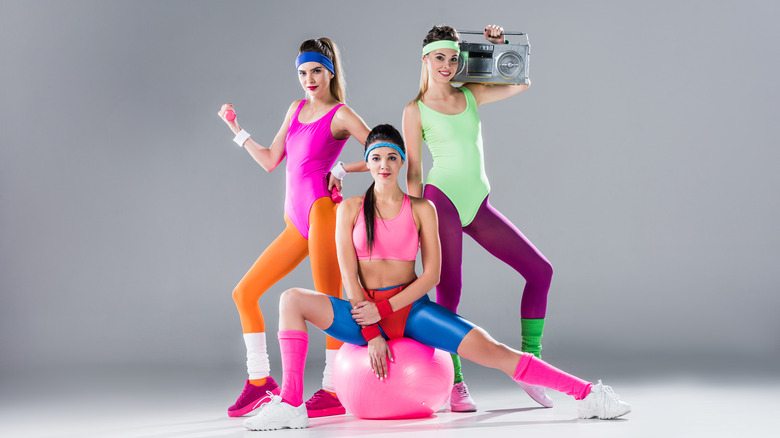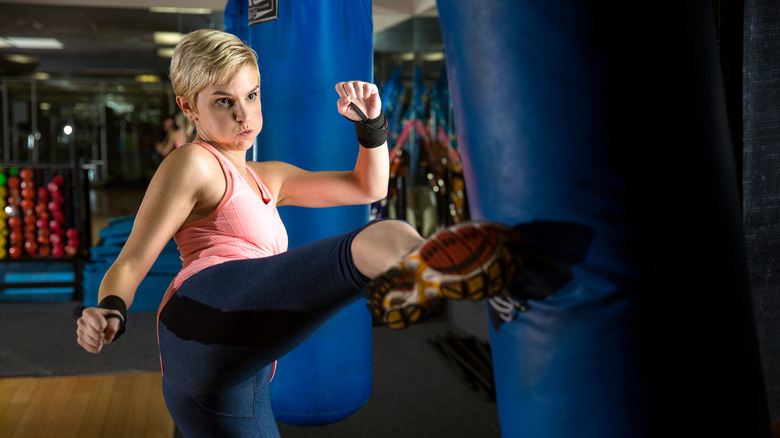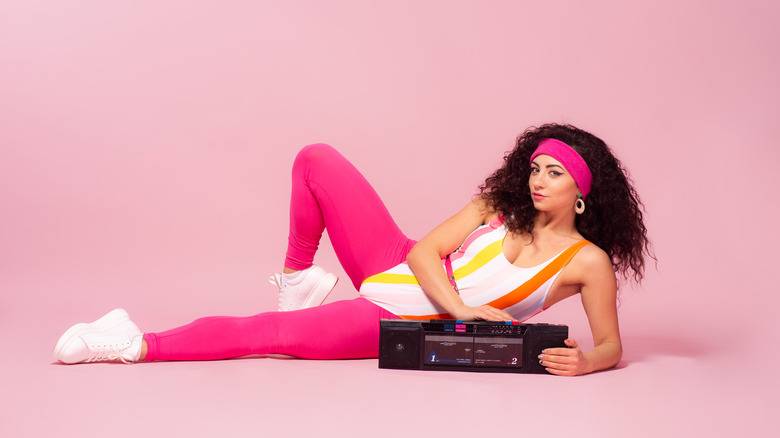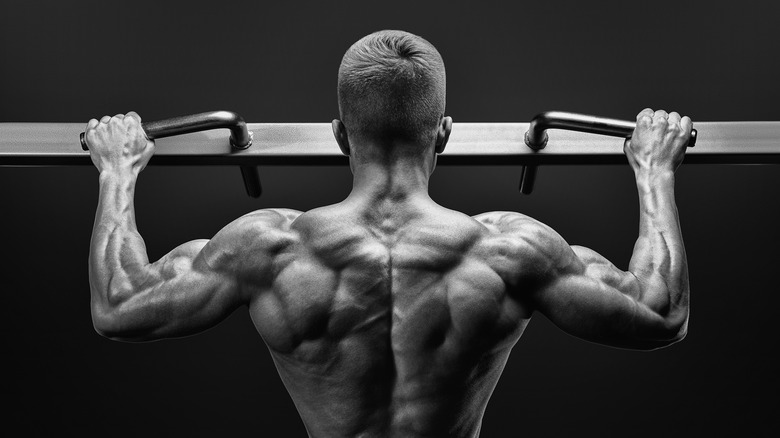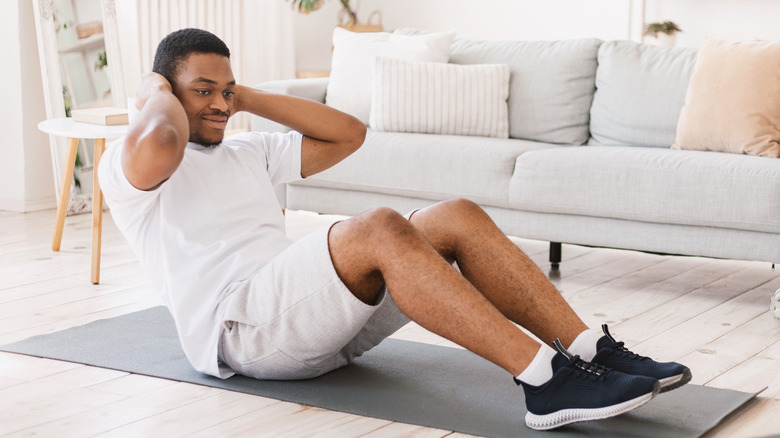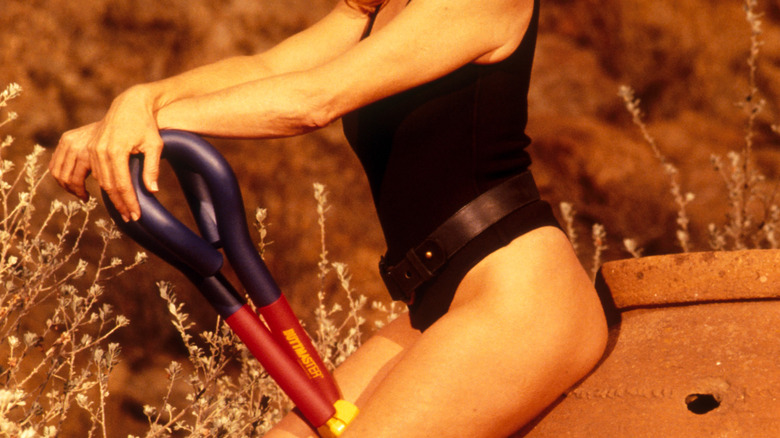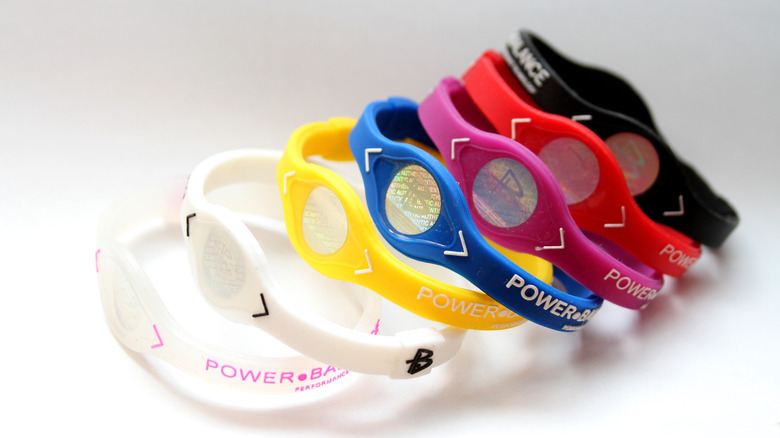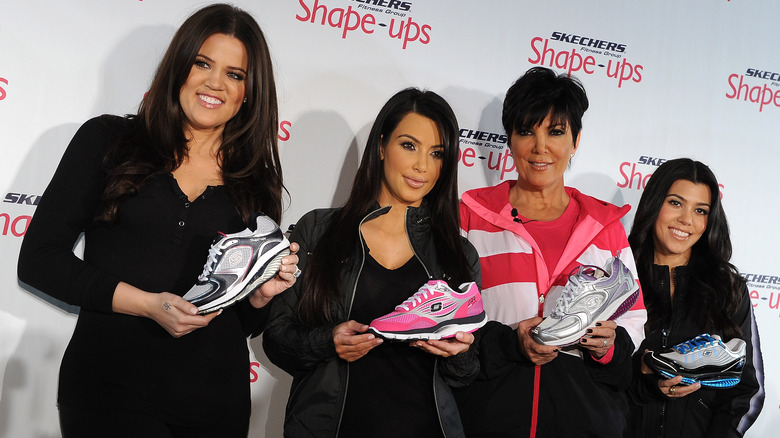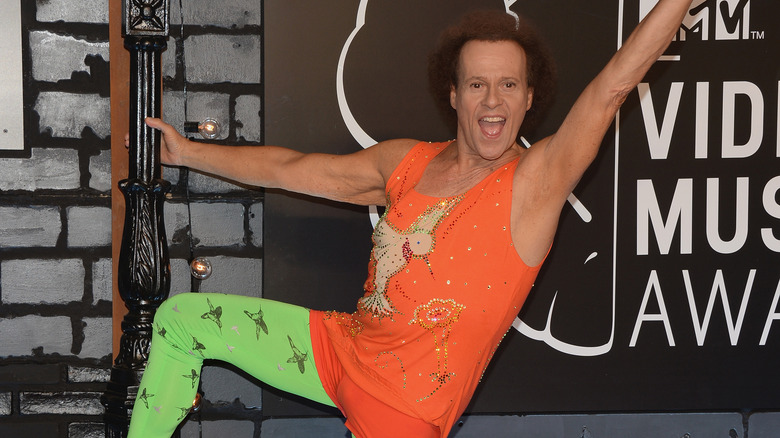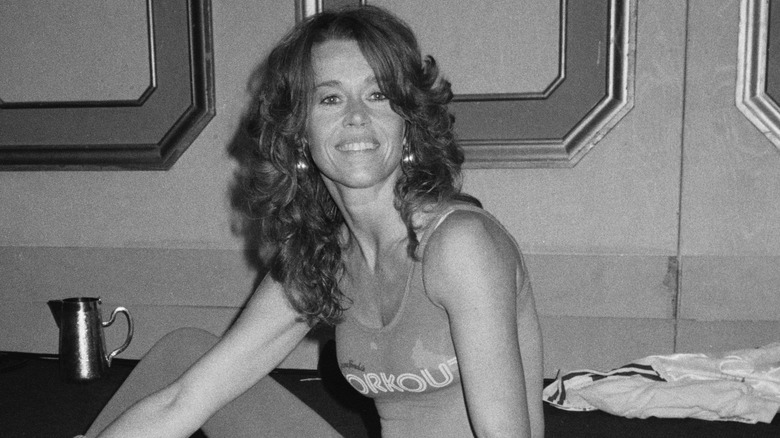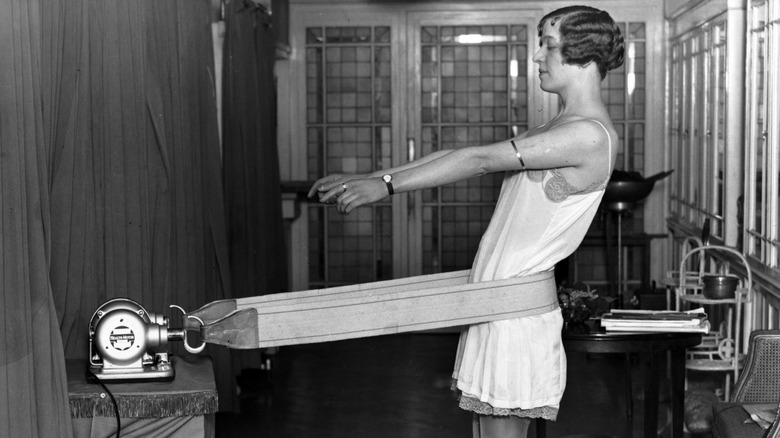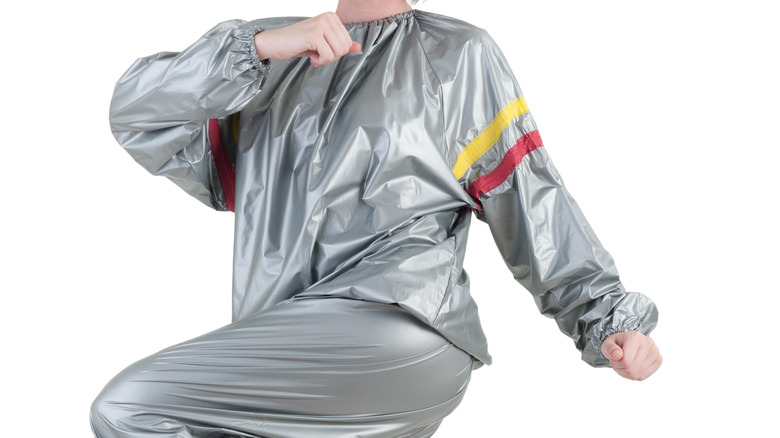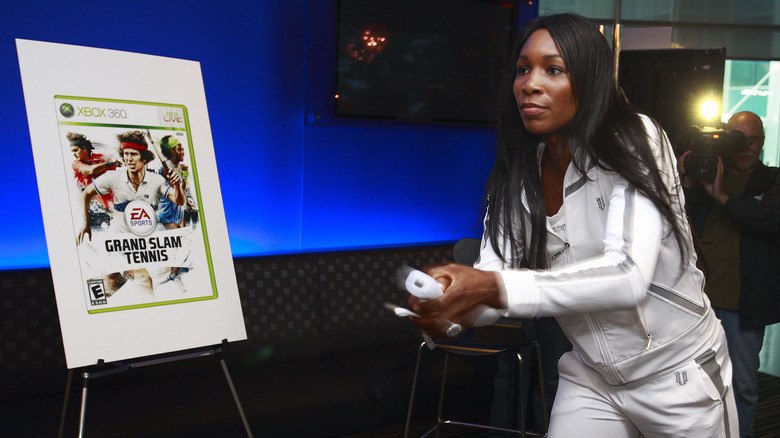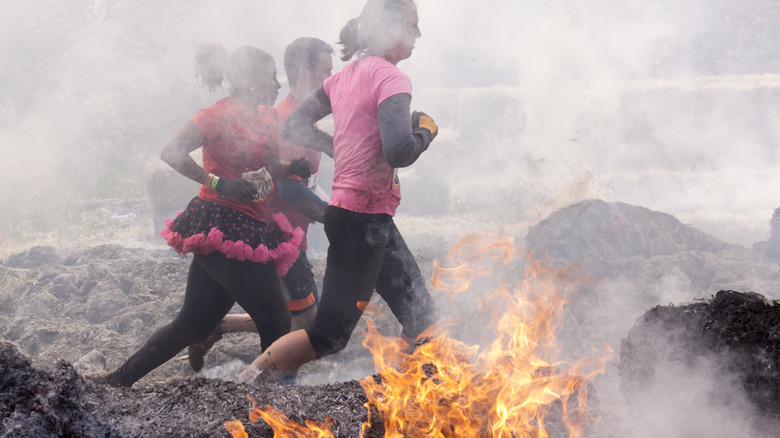Fitness Trends That Completely Disappeared
Fitness fads come and go. No matter your relationship with fitness, some trends are so iconic that they become ubiquitous with the time period in which they rose to popularity. The '80s were marked by iconic neons, leotards, and Jane Fonda. Bootcamps came to rise in the 1990s, and we've watched the Beach Body program's fire smolder before our eyes.
Some trends get recycled, others come out of thin air, and others gain traction by being advertised by celebrities with household names. Every so often, a trend comes along that takes the fitness world by storm and then disappears just as quickly. You may have been waiting for the CrossFit craze to die down, or maybe you're hoping it sticks around forever. And we all remember the Shake Weight, which had its time to shine before meeting a swift death when people started to feel uncomfortable watching middle-aged men "work out" with it in Wal-Mart.
Yes, many fads fade into oblivion as quickly as they rose to fame, only to be archived in the memories of a few diehard fans. We did a deep dive to jog our collective memory and came up with some of the most popular fitness trends that have completely disappeared.
Tae Bo
Billy Blanks released the first Tae Bo fitness recordings on VHS in 1999, during VHS workout tapes' heyday (via Racked). This cardio kickboxing phenomenon rose to popularity virtually overnight, with Blanks proclaiming it was the "future of fitness."
Tae Bo is a fusion of boxing and taekwondo and admittedly does provide an exceptional cardio experience. It's no wonder that Blanks rose to fame so quickly. His dynamic and high-energy workouts are addictive and engaging, and his personality is delightful. The metaphorical and physical burn of Tae Bo was felt most intensely in California, where Blanks offered in-person Tae Bo classes to his adoring followers.
Blanks' celebrity roster included the likes of Queen Latifah, Carmen Electra, and Alicia Silverstone, all of whom contributed to the widespread popularity of Tae Bo. As of 2014, Tae Bo was still alive and well in Southern California, though it has faded from the forefront of the fitness world. This makes us wonder: Will these high-energy boxing routines experience a popularity renaissance?
Jazzercise
Chances are high that Jazzercize is one of the first outdated fitness trends that popped into your head when thinking about archaic workout routines. Jazzercise has become synonymous with sweatbands, leotards, and high-energy dance moves. It became super popular after its inception, but now classes are mostly offered in the middle of the day at local community centers.
If you were unlucky enough to miss the zenith of Jazzercise, picture a waif-like blonde in a leotard spitting antiquated fitness rhetoric to a group of energetic women. Jazzercise was created by Judi Sheppard Misset in the '60s and paved the way for boutique fitness today (via The Atlantic). Jazzercise created a fitness community for women by women and the accessibility of it appealed to ladies far and wide.
While many today may laugh at the notion of actually taking a Jazzercise class, the influential elements of Misset's dynamic creation should not be forgotten — nor practiced solely by your grandmother before Bingo. The lingering effects of Jazzercise on the fitness landscape remain, with myriad boutique fitness franchises continuing to crop up at an astounding rate. Misset's emphasis on providing a comfortable environment for women to work out in truly aided in the overall acceptance of exercise among women.
The Bowflex
Perhaps you know the Bowflex from one of the most widespread fitness infomercials of all time. Bowflex was iconically touted as a revolutionary home gym experience — until it wasn't. This pully-and-rack system became available for home purchase in 1986, and its rise to the top was slow and steady (via WebMD).
For a while, it seemed like everyone's dads were eating Tiger Milk protein bars by morning and pumping the Bow Flex iron by afternoon. The Bowflex's popularity peaked in the early 2000s and then diminished. As WebMD explained, "For most exercisers, Bowflex Home Gyms will probably not result in the impressive physiques you see in Bowflex's advertisements. Nor are they the best workout for competitive athletes."
The Bowflex offered a fair amount of variety in terms of strength-building exercises, but its lack of overall fitness versatility contributed to its demise. Nowadays, you're most likely to find the dusty, outdated machine in your parents' basement, often embellished with hang-drying laundry.
8-Minute Abs
Alright, gang! We are all about a fast and efficient workout, and the mere gimmick of 8-Minute Abs doesn't disappoint. Sold mainly on VHS, 8 Minute Abs rose to popularity because it appealed to busy people and lazy exercisers alike. Predictably, this ab-specific workout takes a quick eight minutes to complete. It consists of nine different exercises, each done for 45 seconds each (via Mel).
Jamie Brenkus, the face of 8-Minute Abs, is full of helpful commentary, thoughtful cues, and plenty of encouragement to go around. Though this regimen does exist on DVD, it phased out of popularity along with VHS tapes. Though you may have forgotten about this short and aggressive ab workout, don't discount how well these few precise movements target your core. If you want a blast from the past, you can use this quick and precise core workout as a finisher after your daily workout for effective and complete abdominal engagement.
NordicTrack
In 1975, Ed Pauls, a mechanical engineer, was training for a cross-country ski race in Minnesota and found the environmental factors to be uncooperative. While out on an icy jog, Pauls formulated an outline of what an indoor cross-country skiing exercise machine would look like (via Nordic Parts).
The original NordicTrack machine was built to fully mimic the motion of cross-country skiing. After a year and a half of prototyping, Pauls shipped the first units to snow-happy exercisers, and the momentum built from there. By 1988, Pauls could not keep up with the demand for this unique machine and sold the patent to a larger corporation.
For nearly a decade, the popularity grew but ultimately fell apart when NordicTrack filed for bankruptcy. Different exercise machines, such as ellipticals and treadmills, produced by NordicTrack can still be found in gyms today, but nary a soul seek to ape the swoosh-swoosh of cross-country skiing on cardio days. The original cross-country skiing machine is now an outdated relic of fitness trends past.
The ThighMaster
The ThighMaster, originally created by tobacco bigwig Joshua Reynolds, is yet another long-forgotten fitness trend that specifically targeted women. Peter Bieler teamed up with Suzanne Somers to gain traction and promote the original "thigh shaper" (via San Francisco Chronicle). One could argue that this dynamic team thrust the ThighMaster into the public eye by preying on the physical insecurities of stay-at-home moms and businesswomen alike.
The 1990s were flooded with fitness trends designed for women, and the ThighMaster is no exception. Spokeswomen Sommers peddled this adductor-specific tool as a way to "strengthen and tone" your way to great legs, with her gams as the proverbial face of the company. The 1991 infomercial claims that the ThighMaster was designed with the perfect amount of resistance, so you can squeeze your way to looking like you were born with great legs. Ultimately, feminists and exercise scientists gagged at the marketing and validity of this device, which led to its rapid demise before Y2K was even upon us.
Power Balance bracelets
One of the more forgettable and regrettable fitness trends of the 2000s was Power Balance bracelets (via Healthline). Everyone had one, yet no one could fully explain how these devices worked. If you're anything like us, hearing the words "Power Balance bracelets" brings back a slew of fuzzy memories from early in the millennium. Olympians and laypeople alike ran around claiming to be more powerful, aligned, and balanced than ever.
While the logic of these hologram-embellished bracelets is rooted in Chinese medicine and might be sound, the one-size-fits-all shape negates the scientific function of these silicone bands. The marketing of Power Balance bracelets popularized a holistic take on wellness with their supposed ability to "[enhance] the body's natural energy," HuffPost explained. Power Balance claimed that the hologram of each bracelet applied pressure to an acupressure point, thus turning you into Ironman's long-lost cousin.
For many, the bracelets were too large and just flopped around like silicone loops on the wrists of loyal wearers. Some could argue — and did in a court of law — that the bracelets were just silicone bands that flopped around on the wrists of believers. Once the public started to realize the power of the placebo effect, Power Balance bracelets seemed to disappear overnight. The class-action lawsuit filed against the company's claims likely aided in Power Balance's swift burial as well.
Shape-Ups
For a hot minute in 2009, everyone from the Kardashians to your trend-happy personal trainer were wearing Sketchers Shape-Ups. These rocker-soled kicks were marketed as a way to get in shape without ever going to the gym. This is a tried-and-true advertising tactic that targets lackadaisical exercisers and pops up again and again as a way to popularize fitness trends. It is even more notable that many illogical fitness trends are advertised by recognizable celebrities.
Sketchers claimed that walking around on an unstable surface was a great way to tone and shape your legs. As we have seen far too often, there is no quick fix for fitness. Each time a fad like this cycles back around, it rises and falls as the public perceives cracks in the fallible logic behind each device. As the lawsuits and claims of foot pain and postural problems mounted, Sketchers dialed back the production of Shape-Ups. By 2019, this unstable style had all but disappeared (Verywell Fit). These expensive and heavy shoes have since gone extinct and while they offer a fun trip down memory lane, they should definitely stay in the past.
'Sweatin' to the Oldies'
The brainchild of the eccentric Richard Simmons, "Sweatin' to the Oldies," is a hard trend to forget if you were alive at the time of its popularity. "Sweatin' to the Oldies" and Simmons at large are so burned into our collective memory that Simmons had to literally disappear from the public for this fitness trend to die off (via Missing Richard Simmons).
While there are still diehard fans out there, this longtime fitness fad has finally faded from glory. This is a shame, really. "Sweatin' to the Oldies" was arguably the first inclusive and welcoming fitness class for people of all shapes, sizes, and orientations. Simmons created his own gym, Slimmons, in 1974, and it became an oasis for exercisers from around the globe.
Simmons made his mark on the fitness world by cultivating an environment of fun and acceptance (The Washington Post). Since Simmons now opts for a life of hermitage, the trends he created have started to dwindle from our awareness. However, we take solace in knowing that the influence he had on the landscape of fitness will live on forever. We idolize you, Richard, wherever you are.
'Jane Fonda's Workout'
Jane Fonda will not let us forget about her as an actress, activist, and idol for many. However, her 1982 VHS tape, "Jane Fonda's Workout," is an integral piece of fitness culture that has all but been forgotten.
As we've seen with a few other fitness trends released on VHS, this medium often allows genius work to slowly fade into oblivion. Fonda's VHS tape sold more than 17 million copies and was based on her New York Times bestselling book of exercises (via Vogue). Fonda's candid approach to exercise and body image issues were way ahead of her time. Her relatability aided in her popularity as a fitness professional. The exercises Fonda outlined and hyped her crew up to do remain relevant, popular, and biomechanically sound today.
Even still, her household name seems to be more based on her acting prowess and activism than her fitness career. We'd love to pull out this high-energy fitness video in our living rooms and are saddened by the disappearance of this routine from mainstream fitness culture.
Vibrating belts
At this point, you're probably starting to notice that many of the disappearing fitness trends fall under the umbrella of "passive exercise." As mentioned, this is a pervasive marketing tactic that oozes beyond fitness enthusiasts and into the brains of the less-athletically inclined. Unironically, many of the hefty lawsuits taken out against companies touting easy, breezy weight loss have helped secure the final nails in their respective coffins.
The vibrating belt trend has been cyclical and dates back to the 1920s, even though they were first invented in 1850 (via 9Honey). Up until about 2002, many gyms boasted a vibrating belt of some kind (via Buzzfeed). However, this trend isn't totally gone just yet. Vibrating platforms are having their moment in the spotlight, as of this writing, but they are likely to fall by the wayside as they only "help with weight loss when you also cut back on calories," per Mayo Clinic. Vibrating belts were touted as devices to spot-reduce body fat, which is an impossibility, according to fitness professionals (American College of Sports Medicine). Exercise science is to blame for the sharp downturn in the popularity of these tummy-jumbling devices, no doubt.
Sauna suits
Sauna suits are basically tracksuits fashioned out of garbage bags. These suits are the antithesis of moisture-wicking; not only do they insulate the body, but they actively provoke excessive sweating. We've seen sauna suits rise to fame repeatedly as wrestlers and boxers sweat it out to cut weight. In short, sauna suits help stimulate the production of sweat, which can dehydrate you. Once you've dropped some water weight, the needle on the scale moves downward, giving the illusion of weight loss.
Sauna suits were swiftly kicked from atop their high horse in 1997 when three collegiate athletes died using them to rapidly lose weight (via Healthline). The overall popularity of sauna suits has petered out due to the sheer danger they pose. But some people still tout the benefits of "sweating out toxins." However, your kidneys and liver are your body's detoxifying organs. Studies have shown that there is no benefit to actively sweating to the point of dehydration (via WebMD). So, yeah, we are glad that sauna suits are no longer trendy.
Wii tennis
"Wii Sports," and Wii tennis, in particular, became ultra popular after its initial release date in 2006. By 2009, even then-dating couple Prince William and Kate Middleton were reportedly on the bandwagon (via Inside Hook). People worldwide were swinging their little white remotes across their living rooms, deep in competition with their friends, families, and even strangers.
Wii tennis became popular because it was among the first video games to mimic sports-like movements during play. Unlike other popular video games, Wii Sports truly engaged users with gross motor movements. The accessibility of Wii sports to non-gamers substantially widened the public interest. Furthermore, Wii was released with motion-control, which was high-tech at the time (via Inside Hook). While a few clever people threw it back and resurrected their Wii consoles in 2020, most of us have completely forgotten about this fun fitness trend since its fall from grace in 2013.
Tough Mudders
Wasn't it just, like, last year that everyone you knew was decked out in orange, covered in mud, and training for a Tough Mudder race? Adventure races persuaded non-runners into running half-marathon distances and beyond because they sprinkle in frightful obstacles every mile or so. Savage, bro. Will Dean and Guy Livingston originally conceived the idea after discovering the Tough Guy Race, a harder and more competitive obstacle race (via Mudder Guide).
In May 2010, the very first Tough Mudder took place in Pennsylvania. The emphasis on team building and fun was the flame that ignited the fiery craze around the world. By 2015, Tough Mudders were an international phenomenon that put camaraderie and team spirit above all else. The brains behind Tough Mudders practiced what they preached and have donated over $8 million to various charities, including the Wounded Warrior Project. There is no doubt that Dean and Livingston created a fun and rowdy fitness trend, the popularity of which eventually dwindled. Who knows, maybe we can look forward to seeing the reemergence of this trend, and a select few others, as the world returns to normal (or a new normal).

